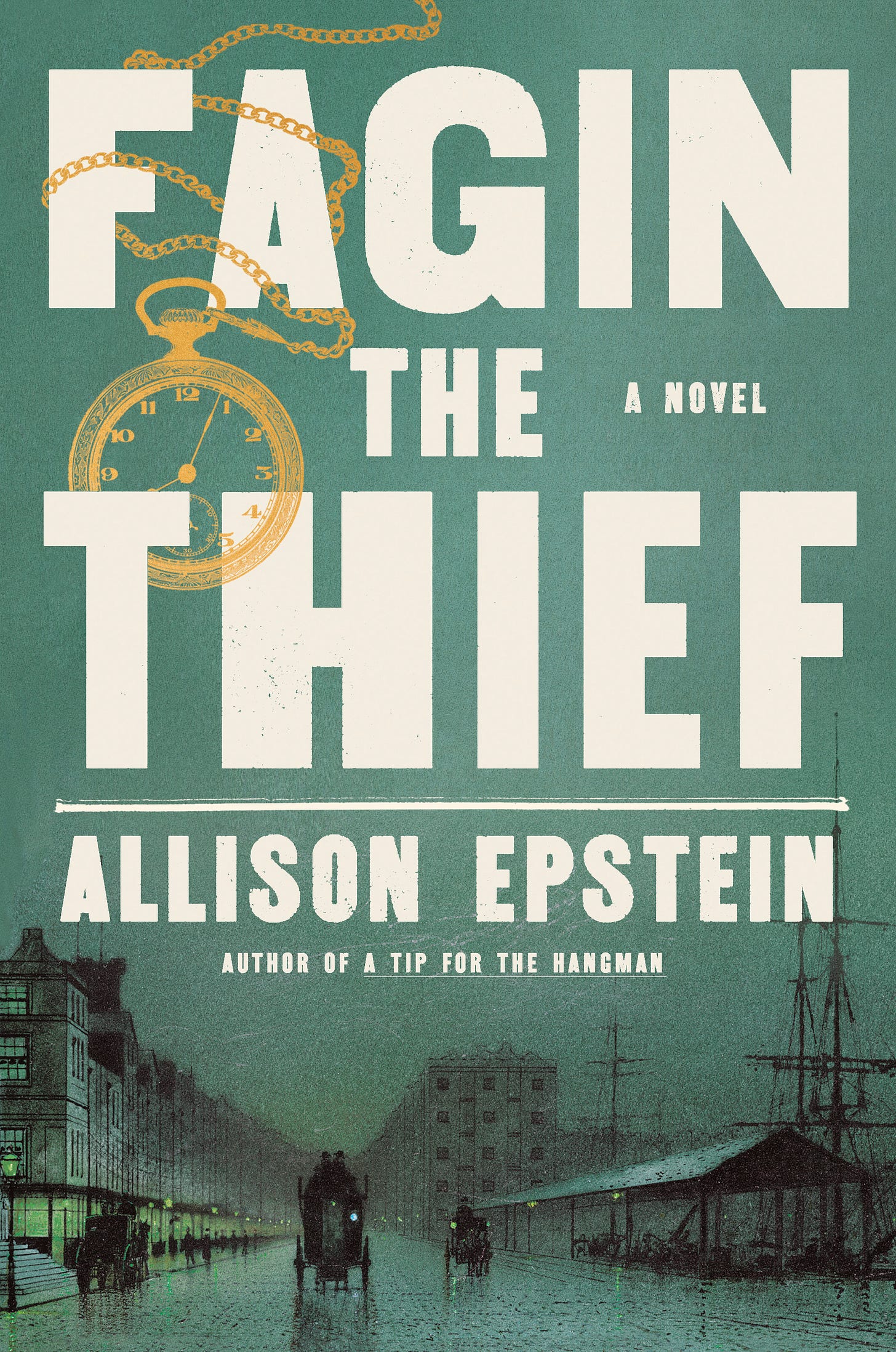Book Review: 'Fagin the Thief — A Novel'
A thrilling reimagining of the world of Charles Dickens, as seen through the eyes of the infamous Jacob Fagin, London’s most gifted pickpocket, liar, and rogue
If you’re a Substack follower or subscriber, you must be well aware of
and her glorious publication Dirtbags Through the Ages. I can wholeheartedly endorse her hysterical takes on real-life mischievous miscreants, liberally sprinkled with doses of profanity and pun-filled descriptions. However, that is all swept aside with the dark tone and sinister Victorian-era tale known as Fagin the Thief.Epstein’s latest alternative historical narrative (Let the Dead Bury the Dead is available here and A Tip for the Hangman here), is a fascinating spin on the fabled Charles Dickens classic Oliver Twist. While it’s not an absolute necessity to be well-read in the classic tale, taken at face value, this narrative sits well on its own with a pinch of salt and pepper.
It’s 1838 London and we’re quickly introduced to the familiar Victorian-era cast of characters, including Jacob Fagin, and in short order, Oliver Twist. The grim circumstances and surroundings are not for the faint of heart as Epstein paints a portrait as dark and sullen as a reader can imagine. We then jump back in time to a young Fagin and a seminal introduction to a gang of youths, mirroring into the future the similarities of Twist and Co.
Fagin’s life takes a hard left after meeting Anthony Leftwich, marveling at the man’s deft touch in pickpocket thievery, who proceeds to invest his time in the young man’s street schooling. Epstein fills in the surroundings with colorful details that enhance the period and locale, deepening the experience of loneliness and belonging that is just out of grasp.
It must be so much worse to see nothing but the rough weave of burlap. Sweat spilling from your brow into your eyes. The hot cloud of your own breath, like a child with a blanket pulled over his head. What does it sound like? What does it smell like?
There are fragments of joy in the companionships that engulf his life. His mother is on the periphery, a seamstress in the loosest sense, loving and proud, and Nancy Reed, a thief herself who becomes a trusted confidante. But in a sense, the need for a backstory as tragedies unfold paints a richer and dirtier landscape that as always, ominously befits Dickens’ characters.

The flashbacks and forwards lay bare the existence of Fagin. His skin-crawling meeting with Bill Sikes and the years-long tussle of their friendship is only a portent of how their lives will collide head-on again and again. Eerily, the epilogue to Fagin when he becomes a victim of his own doing has much to do with Epstein’s colorful and savage dialogue than any descriptives from a Dickens novel.
As with most of Dickens’ personae, the past haunts the present, revealing the downbeat underbelly of the old and the young, the minorities and the ne’er do wells. Death is ever present and the threat of it gives Fagin a near-empathetic role as a conflicted soothsayer and voice of reason. As our protagonist sees off his proteges, his mentor, and his ghosts, it becomes clear that as dirty and hollow as it’s painted, Epstein has injected a curious sense of human understanding that only she can produce.
Fagin the Thief — A Novel by Allison Epstein, published by Doubleday is available February 25 and can be pre-ordered on Amazon in the US and the UK and Barnes & Noble.







